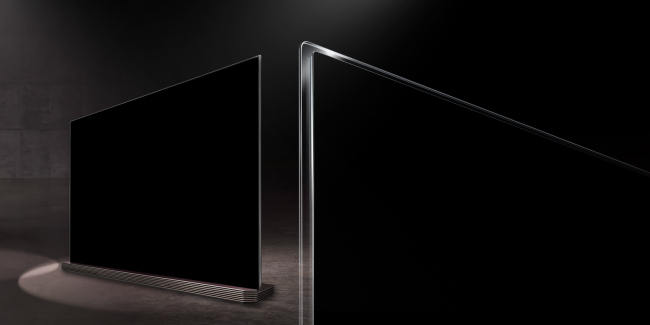LG
LG to drive down OLED panel prices with inkjet printing next year
[THE INVESTOR] LG Display is expected to adopt inkjet printing technology next year to beef up the production of organic light-emitting diode panels for TVs.
“With the inkjet printing adoption, LG Display could reduce OLED panel prices, posing a direct threat to Chinese LCD makers,” said Yi Choong-hoon, senior analyst at UBI Research, a local research firm specialized in OLED, during a seminar on Dec. 2.
 |
LG Signature ultra-premium OLED TV |
According to industry sources, LG Display has been testing the more cost-effective inkjet printing technology along with the sole maker California-based Kateeva at its new OLED production plant in Paju, Gyeonggi Province.
The new tech, even though it is still in trial phases, is expected to drastically drive down the production costs of OLEDs and the panel prices overall. Despite OLED’s better color contrast and higher energy efficiency, most display makers still stick to LCDs due to cheaper production costs.
Compared to the existing costly and slow coating and layering process, the inkjet printing has greatly simplified the process – spraying the coating materials directly to the mother glass through nozzles.
Yi of UBI predicted LG Electronics, the market leader in OLED TVs, could break even next year when the new production line with a monthly 60,000 panels starts operation.
Currently, OLED TVs are priced three times higher than conventional LCD TVs and double the prices of more premium quantum-dot LCD TVs.
The commercialization of the inkjet printing is also expected to affect Samsung Electronics' OLED TV production that has been suspended since 2013 due to poor profitability. Samsung is also one of the key investors of Kateeva.
But Samsung, the world's largest TV maker, has recently confirmed no immediate plan to produce OLED TVs, focusing more on upgrading its LCD TVs. It is also developing TVs based on quantum dot light-emitting diodes or QLEDs, pinpricks of light that promise even better picture quality than OLED TVs.
“It would take more than 10 years for QLEDs to be commercialized,” Yi said.
By Lee Ji-yoon (jylee@heraldcorp.com)








